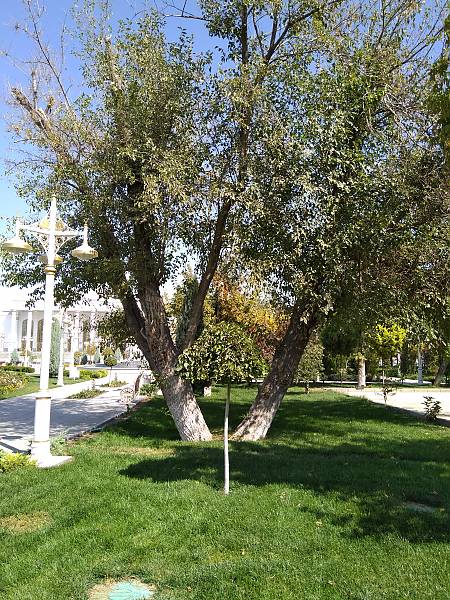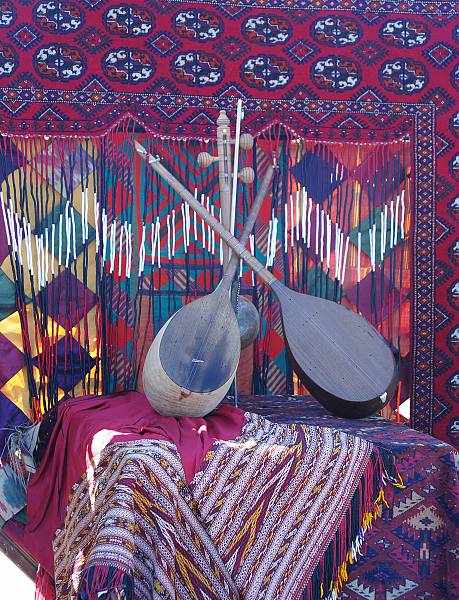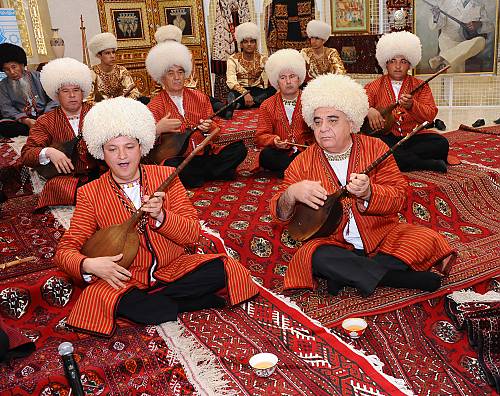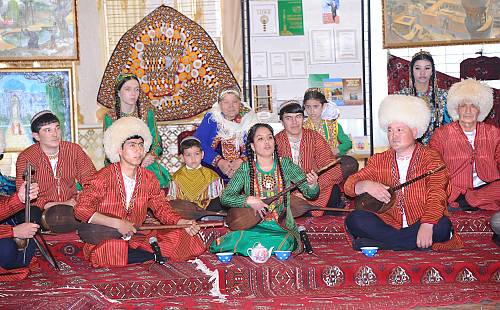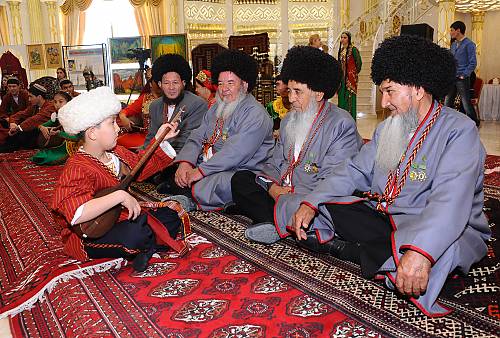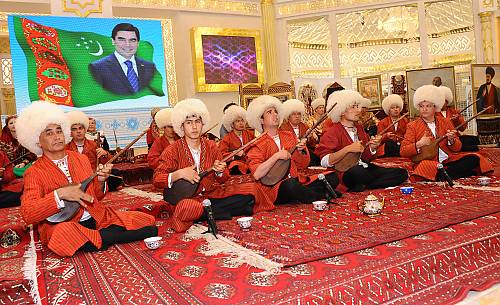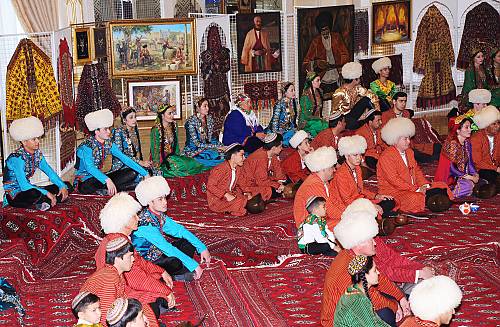Dutar making craftsmanship and traditional music performing art combined with singing
Inscribed in 2021 (16.COM) on the Representative List of the Intangible Cultural Heritage of Humanity
Dutar is a traditional instrument and musical genre from Turkmenistan. The dutar instrument is a long-necked, two-stringed lute with a pear-shaped body covered by a thin wooden sounding board. The resonating body and soundboard are made from a piece of mulberry wood, and the neck is made with the dried trunk of an apricot tree. To make the body of the dutar, the wood is rounded, hollowed out and polished. The wood for the cover is baked for up to twenty-four hours to remove humidity, then glued over the hollow of the dutar using bone glue. Finally, the neck, frets and strings are added, and the instrument is tuned. The dutar is an inseparable part of Turkmen culture and is used in all of the main genres of Turkmen music and singing. The music is divided into two types: dutarchy, which refers to music played alone, and bagshy, which refers to music accompanied by singing. There are also several sub-types. For instance, a dessanchy bangshy is an epic performance incorporating narration, singing and vocal improvisation, thus alternating poetry and prose. In Turkmenistan, dutar music is an essential part of festivities, ceremonies, national celebrations, cultural festivals, social gatherings and entertainment programmes.

